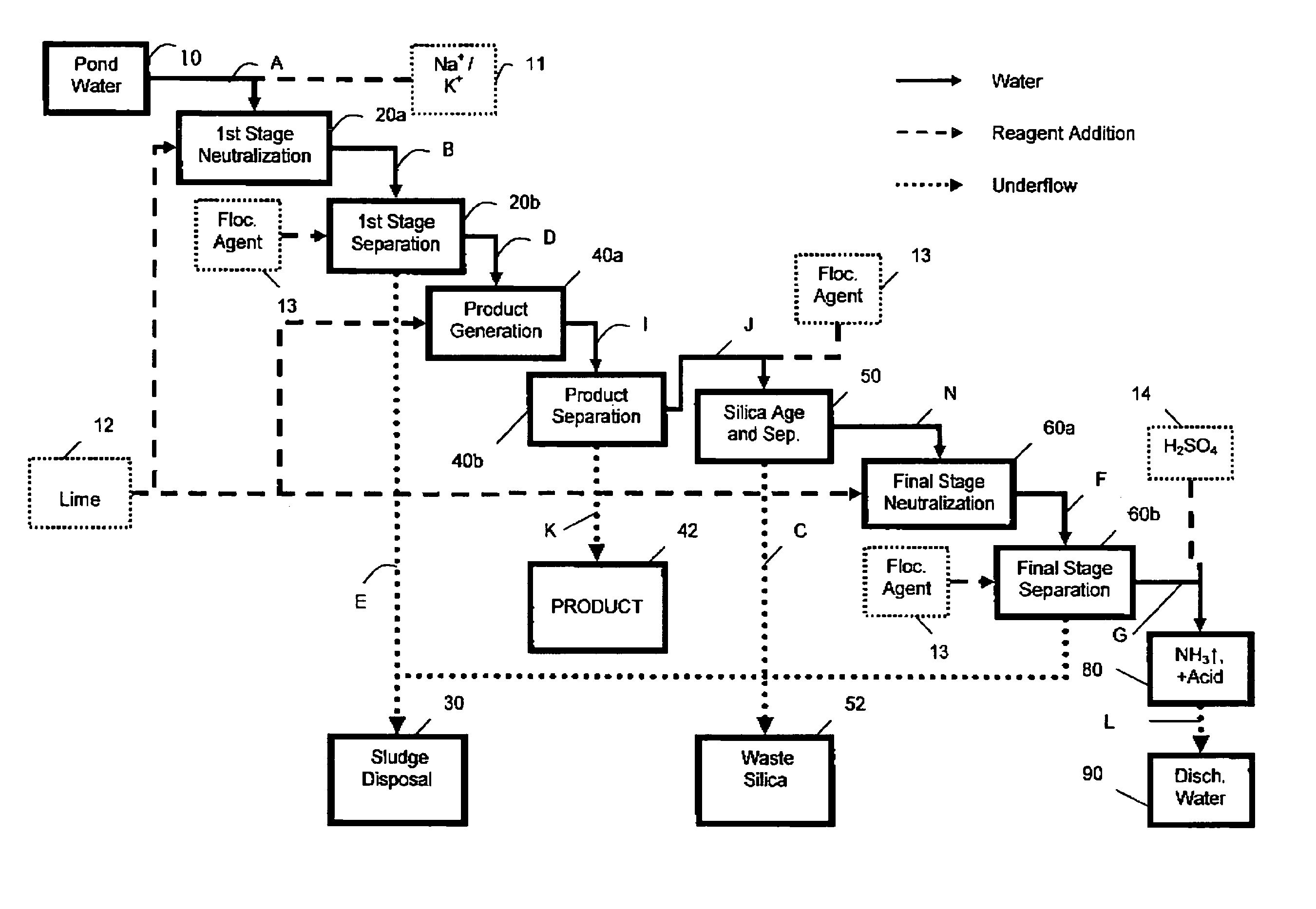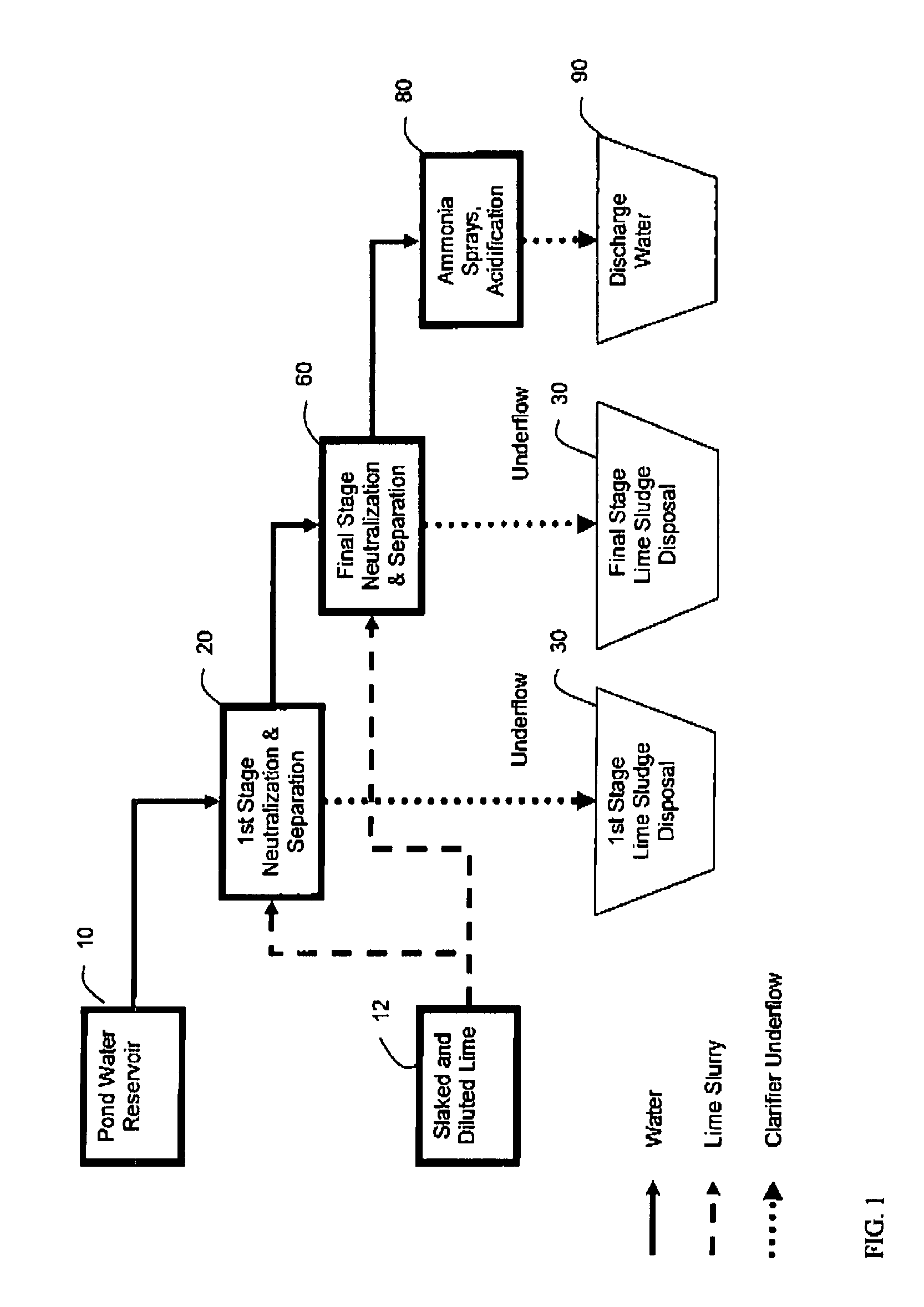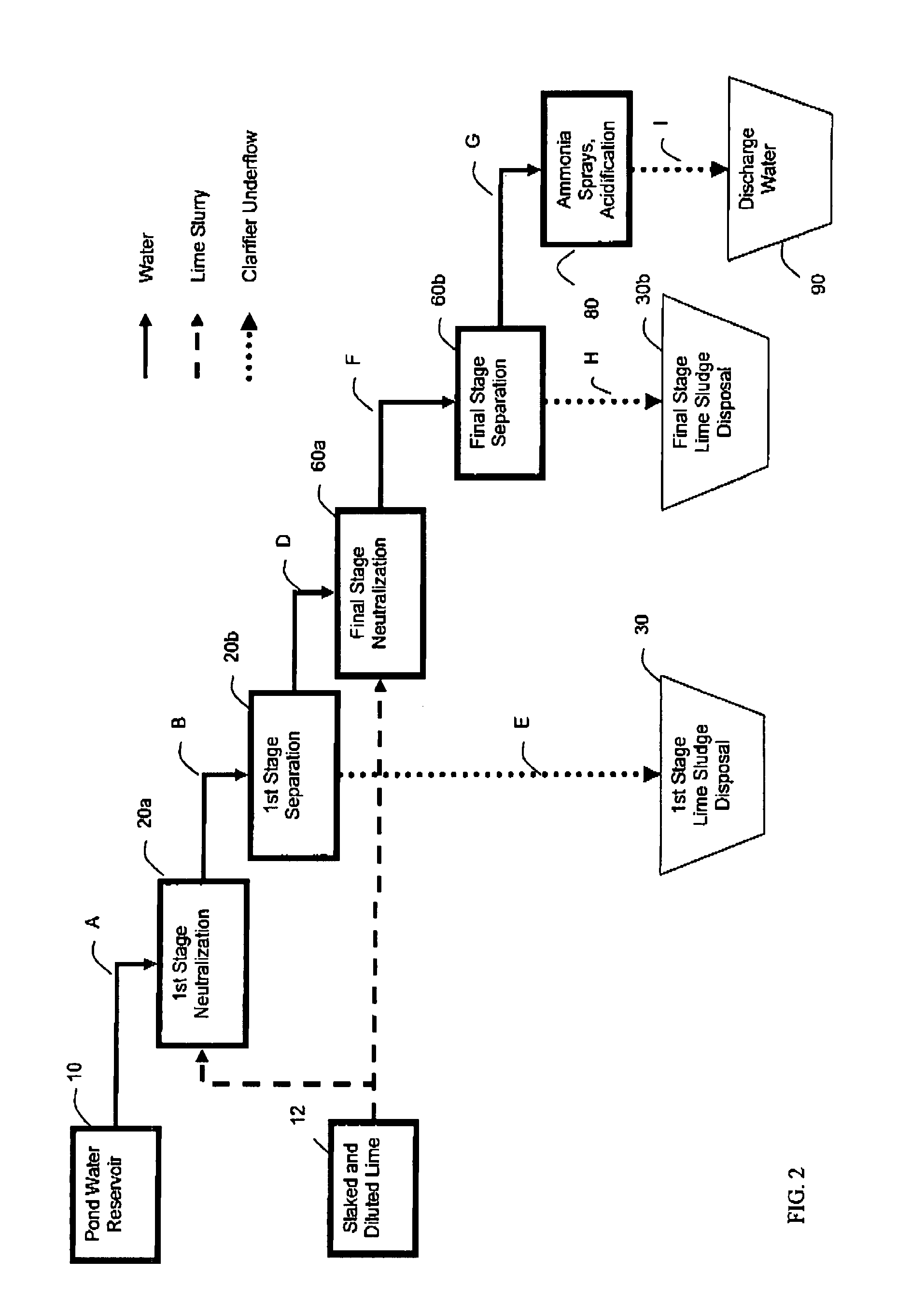Process for treating pond water
a technology for pond water and treatment methods, applied in water treatment multi-stage treatments, water/sewage multi-stage treatment, separation processes, etc., can solve the problems of contaminated, extended period of abnormally heavy rainfall, treatment and discharge of contaminated pond water, etc., to facilitate the recovery of phosphate values, reduce contaminants, and low fluoride values
- Summary
- Abstract
- Description
- Claims
- Application Information
AI Technical Summary
Benefits of technology
Problems solved by technology
Method used
Image
Examples
example 1
Standard Double Lime Process at 1st Stage pH 3.8 and 4.5
[0084]Lime Slurry was added, with agitation, to Phosphoric Acid Plant Pond Water to raise the pH from ˜1.7 to between 3 and 4 (1st Stage or liming). The suspension was allowed to settle and water recovered (1st Stage clarification). Additional Lime was added to raise the pH to between 10 and 12 (2nd Stage neutralization or liming). The suspension was allowed to settle and the treated water recovered (2nd stage clarification). Both sludge streams from both 1st and 2nd stage clarifications are normally discarded. In addition an alternate intermediate pH of 4.5 was also chosen, as many commercial processes operate at this pH. The amount of lime used and the water recovered corresponds to that normally observed during conventional industrial Double Liming.
[0085]1.1. Initial pH Pond Water—1.7 to 3.79
[0086]To 2000 grams pond water, we added 176 grams 15% CaO Slurry with agitation. We allowed the suspension to settle and decanted 1925...
example 2
Pond Water Phosphate Recovery Process Using Lime to Generate the Phosphate Product
[0110]Lime Slurry was added, with agitation, to pond water to raise the pH to between 3 and 4 (1st stage neutralization). The suspension was allowed to settle and the clarified water recovered (1st stage clarification or “1st stage separation”). Additional lime was added to raise the pH to between 5 and 7 (product formation or “product generation”). The suspension was then allowed to settle and the resulting clarified water was recovered (product separation). Additional lime was added a third time to raise the pH to between 10 and 12 (2nd stage neutralization). The resulting suspension was allowed to settle and the clarified water separated (2nd stage clarification or “2nd stage separation”). The underflow solids from the 2nd stage liming were then recycled to 1st stage clarified water for the product formation step. The amount of water recovered and lime used were determined. (See Recovery and Lime Us...
example 3
Pond Water Phosphate Recovery Process Using Recycled Solids to Generate the Phosphate Product
[0120]3.1. Next initial pH pond water—1.57 to 3.47 (1st Stage Neutralization and Clarification)
[0121]To 2000 grams of the original pond water we added 176 grams 15% CaO Slurry with agitation. The suspension was allowed to settle and the clarified water was then decanted.
[0122]3.2. Clarified 1st stage water—3.47 to 5.85 (New Product Generation Step (FIRST))
[0123]To the 1900 grams of the pH 3.47 water, we added the 259 grams of underflow produced from the pH 11.1 water, with agitation. The pH was raised to 5.85. 123 grams of product were found to comprise 25% solids, and were assayed to contain 17.3% P and 0.09% F.
[0124]3.3. Silica Separation Step.
[0125]On standing overnight, 112.7 grams of solids were formed which contained 7% solids and were predominantly hydrated silica.
[0126]3.4. Clarified product water—5.85 to 11.5 (2nd Stage Neutralization and Clarification)
[0127]To 1860 grams of the pH ...
PUM
| Property | Measurement | Unit |
|---|---|---|
| pH | aaaaa | aaaaa |
| pH | aaaaa | aaaaa |
| pH | aaaaa | aaaaa |
Abstract
Description
Claims
Application Information
 Login to View More
Login to View More - R&D
- Intellectual Property
- Life Sciences
- Materials
- Tech Scout
- Unparalleled Data Quality
- Higher Quality Content
- 60% Fewer Hallucinations
Browse by: Latest US Patents, China's latest patents, Technical Efficacy Thesaurus, Application Domain, Technology Topic, Popular Technical Reports.
© 2025 PatSnap. All rights reserved.Legal|Privacy policy|Modern Slavery Act Transparency Statement|Sitemap|About US| Contact US: help@patsnap.com



